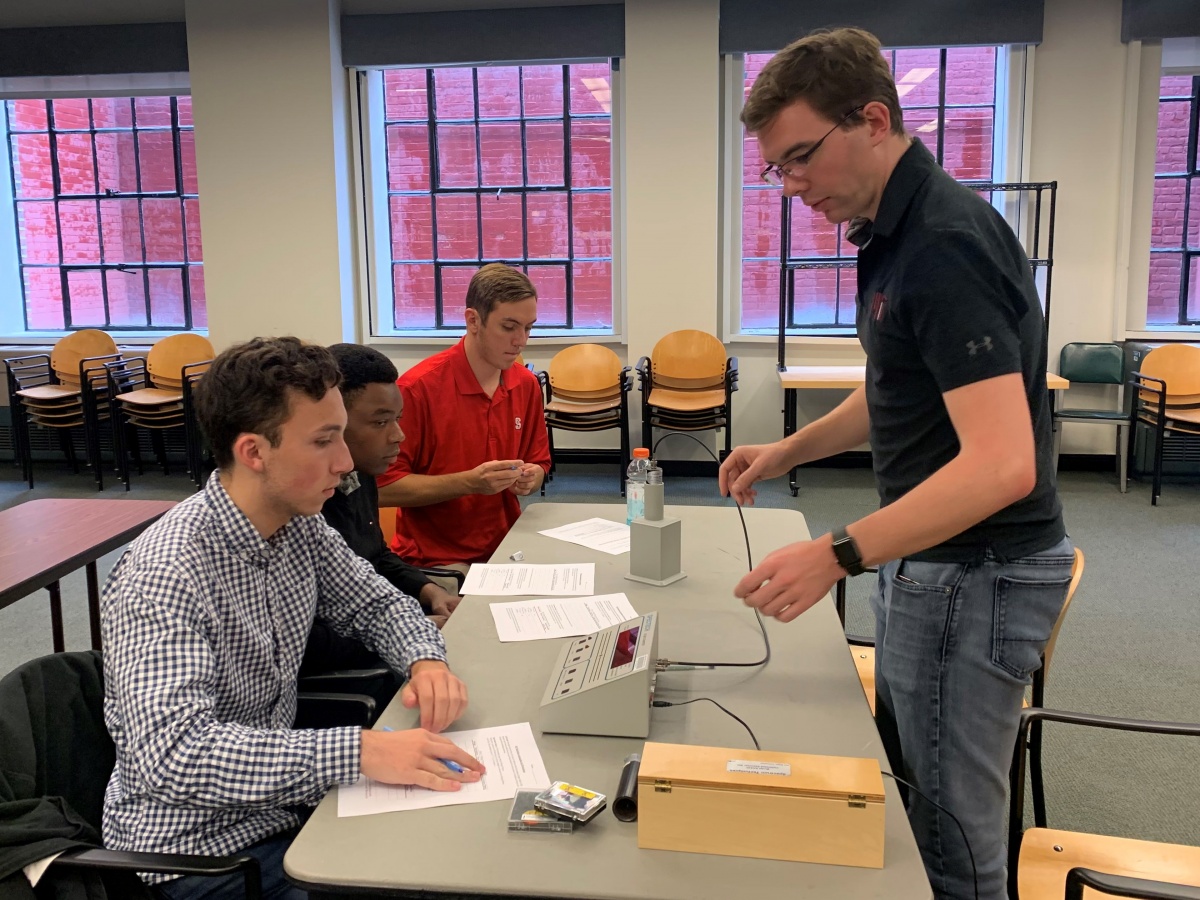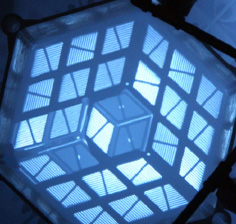Outreach
We're here to educate and inform.
The MIT-NRL maintains a successful public outreach program through which we help to:
- Encourage understanding of nuclear energy and its applications
- Clarify misconceptions about nuclear energy
- Provide medical isotopes to local hospitals
- Assist students with science fair projects
- Provide a web-enabled neutron time-of-flight experimental facility
- Assist in graduate research projects and theses
- Provide sample irradiation and neutron activation analyses (NAA)
- Provide hands-on training to students and utility executives
- Encourage young people to pursue a career in the nuclear industry
Lectures and Tours
Touring MIT's Nuclear Reactor Lab is a unique experience that allows participants to learn more about nuclear science and engineering, radiation facts and safety, the types of research conducted at the lab, how the facility is operated, and more, all while viewing the facility from the inside (including the control room)! Click here for more information about scheduling a lecture and/or tour of the facility.
Skype-a-Scientist (or Zoom!)
Bring us to your classroom with 30 minute Skype or Zoom sessions! These are great for groups who aren't able to tour our facility in person or would like to ask questions or have a conversation with one of our staff members about things that might not be covered in a typical lecture and tour (e.g. career development, higher education paths, interesting parts of their job, any specific parts about nuclear science and engineering they'd like to have clarification on, etc). This is a great time to have students prepare questions after watching the video tour of our facility to ask an engineer, researcher, or reactor operator at the lab while the video and audio feed is projected for the whole class to participate. To schedule, please email Taylor at ttracy@mit.edu and let her know you're interested in arranging a Skype-a-Scientist call as well as the scope of what your class covers and what your students are interested in.
Attenuation Lab
We offer a short lecture presentation followed by an attenuation lab for group of under 25 participants who would benefit more from a lab-based activity than a walking tour of the facility. We are able to do this lab even during the reactor's quarterly scheduled maintenance periods (during which time we aren't able to provide tours). The goal of this lab is for groups to understand and test the principles of radiation detection using a Geiger Muller detector with various sealed sources and demonstrate the interaction of radiation types and energies with shielding materials. Recommended for high school or college students with a background in physics and intro to nuclear physics. To arrange a time to bring your group in for our attenuation lab activity, please email Taylor at ttracy@mit.edu and let her know the dates/times you're hoping to come in, the size of the group, as well as what the group will have covered by the time they come for the lab.

Setting up the attenuation lab

Students doing the attenuation lab
Neutron Shielding Experiment
This activity makes use of a low energy neutron beam at the reactor by way of remote connection to a detector that collects data (counts of neutrons) and a webcam view to see the setup. Along the path of the neutrons is a wheel holding different materials that can be moved into the beam. These materials act as radiological shielding, limiting the number of neutrons that reach the detector. Different materials have different abilities to absorb neutrons.
After a brief lecture priming the students on radiation, fission, and a bit about our lab, students break up into smaller groups and make guesses as to how many neutrons will get through the different types of shielding material. While the detector is counting the neutrons, the students guess how many neutrons will make it through the shielding material and record their guess on a provided worksheet. Students base their guesses on the starting number of neutrons (what the detector counted with no shielding in place) and their background knowledge of the materials. Once the detector finishes counting, students record the actual number of neutrons and the class comes together as a whole to discuss the results. We provide an explanation of how the material interacts with neutrons and answer any questions before moving on to the next shielding material.
This experiment is a great way for students to use what they are already familiar with and apply it to an abstract concept, such as counting subatomic particles. To schedule, please email Taylor at ttracy@mit.edu

